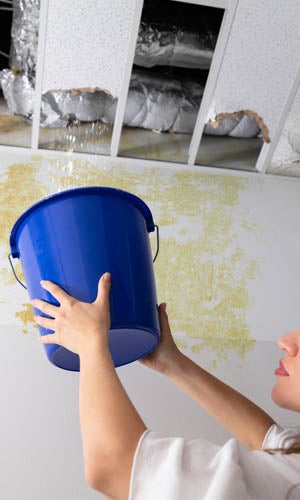Overview To Water Leakage Discovery In The House
Overview To Water Leakage Discovery In The House
Blog Article
They are making several good pointers relating to Top leak detection hacks in general in this post down below.

Early detection of dripping water lines can mitigate a potential catastrophe. Some tiny water leakages may not be noticeable.
1. Analyze the Water Meter
Every home has a water meter. Examining it is a surefire way that helps you discover leakages. For beginners, turn off all the water resources. Make sure nobody will certainly purge, make use of the tap, shower, run the washing machine or dish washer. From there, go to the meter and watch if it will transform. Considering that no person is using it, there need to be no activities. That shows a fast-moving leakage if it moves. If you discover no adjustments, wait a hr or two as well as check back once again. This suggests you might have a sluggish leakage that can also be underground.
2. Inspect Water Usage
Examine your water bills and also track your water consumption. As the one paying it, you should observe if there are any kind of discrepancies. If you detect sudden changes, regardless of your intake coinciding, it implies that you have leaks in your plumbing system. Keep in mind, your water costs ought to drop under the very same array monthly. An abrupt spike in your expense shows a fast-moving leakage.
A consistent rise every month, also with the very same behaviors, reveals you have a slow leak that's additionally slowly escalating. Call a plumber to extensively check your property, especially if you feel a warm location on your flooring with piping underneath.
3. Do a Food Coloring Test
When it comes to water intake, 30% comes from commodes. If the shade in some way infiltrates your dish during that time without flushing, there's a leakage in between the container as well as bowl.
4. Asses Exterior Lines
Don't neglect to inspect your exterior water lines also. Test faucets by affixing a garden pipe. Should water permeate out of the link, you have a loosened rubber gasket. Replace this and guarantee all connections are tight. It will certainly aid obtain it professionally examined and also maintained yearly if you have actually obtained a sprinkler system. One tiny leakage can throw away tons of water as well as spike your water costs.
5. Check and also Assess the Scenario
House owners must make it a behavior to inspect under the sink counters and also inside closets for any bad odor or mold and mildew growth. These two warnings suggest a leakage so timely attention is required. Doing routine evaluations, also bi-annually, can save you from a major trouble.
Inspect for stainings and compromising as many pipelines and also home appliances have a life expectancy. If you presume dripping water lines in your plumbing system, don't wait for it to escalate.
Early detection of leaking water lines can minimize a possible calamity. Some tiny water leakages may not be visible. Examining it is a guaranteed means that helps you uncover leaks. One little leak can squander tons of water as well as increase your water bill.
If you presume leaking water lines in your plumbing system, don't wait for it to intensify.
WARNING SIGNS OF WATER LEAKAGE BEHIND THE WALL
PERSISTENT MUSTY ODORS
As water slowly drips from a leaky pipe inside the wall, flooring and sheetrock stay damp and develop an odor similar to wet cardboard. It generates a musty smell that can help you find hidden leaks.
MOLD IN UNUSUAL AREAS
Mold usually grows in wet areas like kitchens, baths and laundry rooms. If you spot the stuff on walls or baseboards in other rooms of the house, it’s a good indicator of undetected water leaks.
STAINS THAT GROW
When mold thrives around a leaky pipe, it sometimes takes hold on the inside surface of the affected wall. A growing stain on otherwise clean sheetrock is often your sign of a hidden plumbing problem.
PEELING OR BUBBLING WALLPAPER / PAINT
This clue is easy to miss in rooms that don’t get much use. When you see wallpaper separating along seams or paint bubbling or flaking off the wall, blame sheetrock that stays wet because of an undetected leak.
BUCKLED CEILINGS AND STAINED FLOORS
If ceilings or floors in bathrooms, kitchens or laundry areas develop structural problems, don’t rule out constant damp inside the walls. Wet sheetrock can affect adjacent framing, flooring and ceilings.
https://www.servicemasterbyzaba.com/blog/how-to-detect-water-leakage-in-walls/

I came across that article on Locating water leaks when exploring the web. Make sure you set aside a second to promote this blog entry if you enjoyed it. Thank you for taking the time to read it.
Report this page